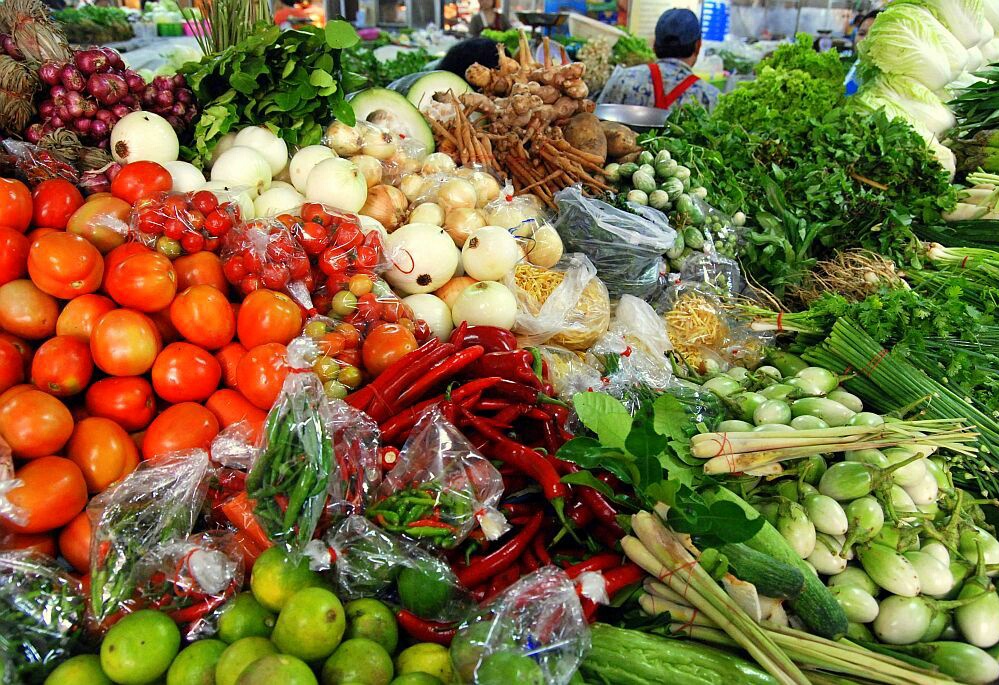There are more than 30 types of vegetables that are grown in Nigeria, though some are in more demand than others Vegetables are well-known for being good for your health. Most vegetables are low in calories but high in vitamins, minerals and fiber. However, some vegetables stand out from the rest with additional proven health benefits, such as the ability to fight inflammation or reduce the risk of disease.
This article takes a look at the healthiest vegetables in Nigeria and why you should include them in your diet.
Okro (Okra
Okra is an excellent source of vitamins C and K1. Vitamin C is a water-soluble nutrient that contributes to your overall immune function, Okro packs many antioxidants that benefit your health. Antioxidants are compounds in food that fend off damage from harmful molecules called free radicals The main antioxidants in okra are polyphenols, including flavonoids and isoquercetin, as well as vitamins A and C Research shows that eating a diet high in polyphenols may improve heart health by lowering your risk of blood clots and oxidative damage. Okra contains a type of protein called lectin, which may inhibit the growth of human cancer cells. It can also help reduce your sugar level.
Spinach
This leafy green is one of the healthiest vegetables, thanks to its impressive nutrient profile.Spinach also boasts a great deal of antioxidants, which can help reduce the risk of chronic disease. One study found that dark green leafy vegetables like spinach are high in beta-carotene and lutein, two types of antioxidants that have been associated with a decreased risk of cancer.In addition, a 2015 study found that spinach consumption may be beneficial for heart health, as it may lower blood pressure.
Bitter leaf
Bitter leaf (Vernonia amygdalina) is a vegetable used for preparing the popular Bitter leaf soup. It is also known as Onugbu, Shiwaka & Ewuro by the Igbos, Hausas&Yorubas in Nigeria.Although this plant has been around for hundreds of years, only a few people know of its medicinal and healing properties. Bitter leaf as the name implies, is actually a bitter plant whose leaves, extracts, stems and barks are used for culinary,medicinal and curative purposes. Vitamins in Bitter leaf includes;Vitamin A, Vitamin C ,Vitamin E, Vit.B1 and Vit.B2. Some of the health benefits of Bitter leaf; weight loss, relieves fever and feverish conditions, reduce high sugar level in the blood, detoxify the body of harmful toxins. increase breast milk production in nursing mothers among many others .
Tomatoes
Tomatoes are fruits that are considered vegetables by nutritionists. Botanically, a fruit is a ripened flower ovary and contains seeds. Tomatoes are the major dietary source of the antioxidant lycopene, which has been linked to many health benefits, including reduced risk of heart disease and cancer. Tomatoes are a good source of fiber, providing about 1.5 grams per average-sized tomato.
Most of the fibers (87%) in tomatoes are insoluble, in the form of hemicellulose, cellulose, and lignin.Tomatoes are a good source of several vitamins and minerals:
- Vitamin C. This vitamin is an essential nutrient and antioxidant. One medium-sized tomato can provide about 28% of the Reference Daily Intake (RDI).
- Potassium. An essential mineral, potassium is beneficial for blood pressure control and heart disease prevention.
- Vitamin K1. Also known as phylloquinone, vitamin K is important for blood clotting and bone health .
- Folate (vitamin B9). One of the B vitamins, folate is important for normal tissue growth and cell function. It’s particularly important for pregnant women.
Carrots
Carrots are packed with vitamin A, providing 428% of the daily recommended value in just one cup (128 grams) .They contain beta-carotene, an antioxidant that gives carrots their vibrant orange color and could help in cancer prevention. A study showed that eating carrots may reduce the risk of lung cancer in smokers as well. Compared to those who ate carrots at least once a week, smokers who did not eat carrots had a three times greater risk of developing lung cancer. Carrots are also high in vitamin C, vitamin K and potassium .
Garlic
Garlic has a long history of use as a medicinal plant, with roots tracing all the way back to ancient China and Egypt. The main active compound in garlic is allicin, a plant compound that is largely responsible for garlic’s variety of health benefits. Several studies have shown that garlic can regulate blood sugar as well as promote heart health. In one animal study, diabetic rats were given either garlic oil or diallyl trisulfide, a component of garlic. Both garlic compounds caused a decrease in blood sugar and improved insulin sensitivity . Another study fed garlic to participants both with and without heart disease. Results showed that garlic was able to decrease total blood cholesterol, triglycerides and LDL cholesterol while increasing HDL cholesterol in both groups. Garlic may be useful in the prevention of cancer as well. One test-tube study demonstrated that allicin induced cell death in human liver cancer cells .However, further research is needed to better understand the potential anti-cancer effects of garlic.
Ginger
Ginger root is used as a spice in everything from vegetable dishes to desserts. Historically, ginger has also been used as a natural remedy for motion sickness. Several studies have confirmed the beneficial effects of ginger on nausea. In a review comprised of 12 studies and nearly 1,300 pregnant women, ginger significantly reduced nausea compared to a placebo. Ginger also contains potent anti-inflammatory properties, which can be helpful in treating inflammation-related disorders like arthritis, lupus or gout In one study, participants with osteoarthritis who were treated with a concentrated ginger extract experienced reduced knee pain and relief from other symptoms. Further research suggests that ginger could aid in the treatment of diabetes as well. A 2015 study looked at the effects of ginger supplements on diabetes. After 12 weeks, ginger was found to be effective in decreasing blood sugar levels.
Ewedu
Ewedu (Cochorus olitorius) is one of those green leafy vegetables rich in minerals, vitamins and antioxidants. It contains loads of iron, calcium, sodium, phosphorus, potassium, proteins, fibers, Vitamins A, C and E, riboflavin, niacin and folate. These are nutrients that help the body fight diseases and maintain good health. The scientific name Cochorus olitorius was derived by a Swedish botanist, physician and zoologist, Carl Linnaeus, from an ancient greek word Corchorus or Korkoros. He explained that Corchorus leaves are consumed in the cuisines of various countries. Corchorus olitorius is used mainly in the cuisines of southern Asia, the Middle East, North Africa and West Africa, Japan and China. It has a mucilaginous (somewhat “slimy”) texture, similar to okra, when cooked. Popularly known as jute mallow in English, Ewedu is one of the Yorubas’ cuisines that is widely cultivated as vegetable fiber after cotton. The seeds are used as a flavouring agent, and herbal tea is made from the dried leaves. SEE: List of Healthy Cereals In Nigeria





